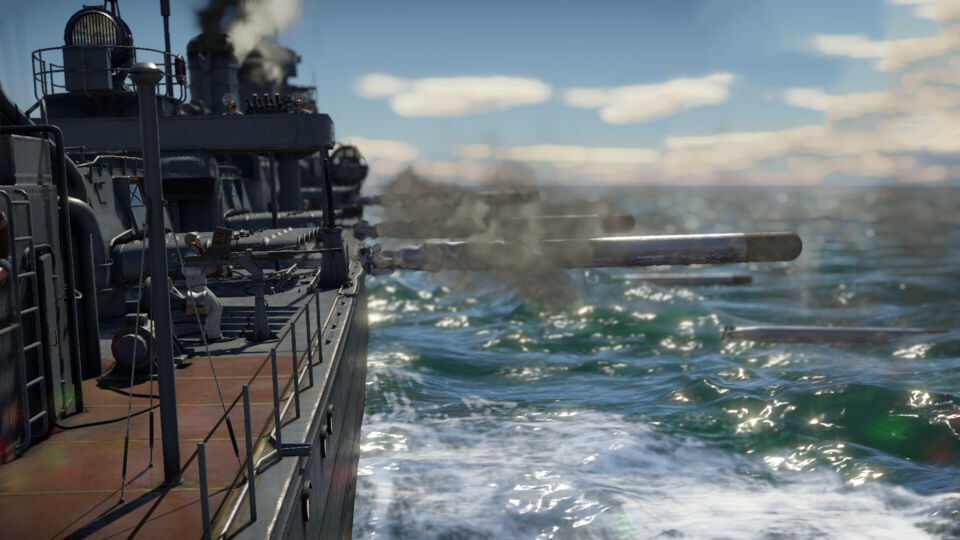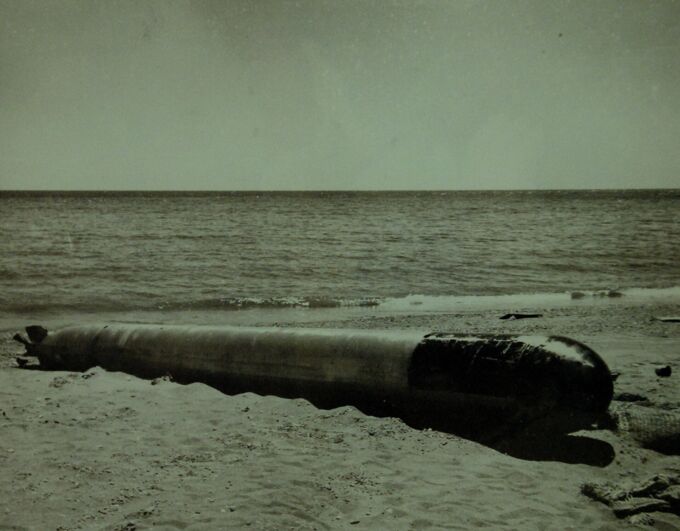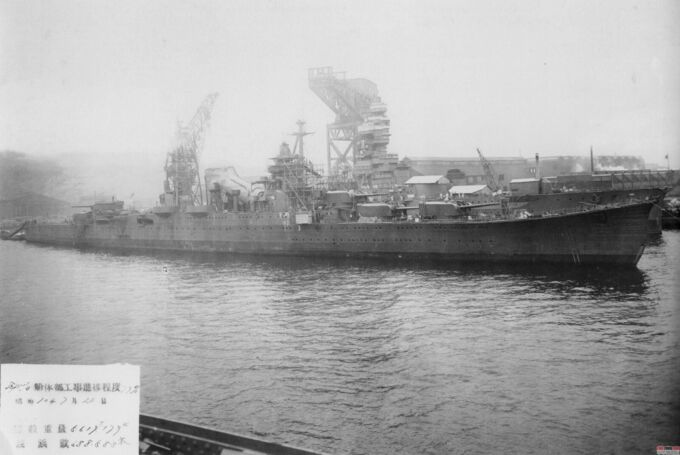On many of the game’s larger ships, torpedoes are more of a support role: they can help in a close combat situation, or destroy an enemy who is too busy looking into their sights. But Japanese Type 93s, one of the most powerful torpedoes in the game, are often more useful than main-calibre guns. On destroyers, they become the main means of fighting the enemy. There are two Type 93 torpedoes: Model 1 and Model 3. The former has a range of 5 kilometres, but 300 kg less explosive than the Model 3. Read more about the deadly Japanese torpedoes in the article.
| Pros | Cons |
|---|---|
| Very large explosive mass | Reload is usually required to access all torpedoes |
| Very high top speed | Additional torpedoes are prone to explode |
| Very long range | |
| Ship usually cary a large amount of these torpedoes |
General info
The Type 93 Model 1, Mod 2 torpedo has a diameter of 610 mm, a length of 9 m, and weighs 2,700 kg. The Torpedo Mode modification is not available for this torpedo. Type 93 Model 3 is 100 kg heavier, travels 15km instead of 20, and has 290kg more explosives (371 kg more in TNT equivalent).
Usage in battles
One useful feature of the Type 93 torpedo is that on most ships that carry them (with the exception of Shimakaze), extra torpedoes are stored on the ship, which allows the torpedo launchers to be reloaded in battle, usually enough for one full reload of the torpedo launchers. While this does limit the number of torpedoes the ship can send at once, the total amount of torpedoes is often much more than what destroyers and cruisers of other nations can carry. This is useful in Realistic Battles as a single ship can launch multiple salvoes of torpedoes without having to visit a capture point to reload. In Arcade Battles, this will allow the torpedoes launchers to effectively have a faster rate of fire, since the torpedo launchers will refill faster than the standard AB torpedo reload.
Be aware though that having extra torpedoes means that the ship essentially has above-deck, unarmoured ammo racks which can destroy the entire ship if detonated. These racks are, of course, emptied as their torpedoes are used to refill the launchers, so it might be a good idea to launch off at least enough torpedoes to empty the racks right away after spawning in. Unlike other torpedoes and fortunately for the Type 93, its unique combination of both a large maximum range and a fast top speed make such strategies viable. By firing a wide salvo at the beginning of the match towards areas where many enemy ships are likely to be pass through (for example, capture points or narrow passes), these sections of the map can effectively be blocked off, and, because of their range and speed, they can catch enemies off-guard who either don’t expect seeing torpedoes so early in the match or don’t expect seeing torpedoes in areas of the map where other torpedoes usually fail to reach. The Type 93 is a particularly useful weapon in the Encounter game mode. The 15-20 km maximum range just is enough to reach across the entire map. Ships armed with the Type 93 torpedoes can strike the enemy team’s AI convoy immediately from spawn.
History
Without the required number of capital warships, nor the industry to produce them, to match the United States in the Pacific, Japan would not be able to win a prolonged war with the US or engage them in a massive battle as there would always be more US ships than Japanese ships. To combat this disadvantage, the Imperial Japanese Navy developed a strategy in which a series of mass torpedo attacks would weaken the US fleet ahead of a major decisive battle. For this, a long-range, stealthy torpedo would be needed. Both the British Royal Navy and the IJN had experimented with oxygen torpedoes in the past. The use of oxygen as an oxidizer, while very efficient, is also extremely dangerous, and, after casualties from premature explosion, development halted. It was in the wake of the new British battleship HMS Rodney, which carried oxygen torpedoes, that interest renewed in Japan. Taking inspiration from HMS Rodney’s torpedoes, development began again in 1928 for a long-range, wakeless oxygen torpedo.
The resulting torpedo, the Type 93 Model 1, Mod 1 torpedo, referred to as Sanso Gyorai (酸素魚雷, “oxygen torpedo”), entered service in 1935. The Type 93 torpedo had a diameter of 610 mm (24 inches), was 9 m (29 feet, 6 inches) long, weighed 2,700 kg, and, being a 24-inch torpedo, was rather large compared to its contemporaries, most of which were 21-inch torpedoes. Many torpedoes of the time used combustion engines for propulsion with compressed air as the oxidizer. In contrast, the Type 93 torpedo utilized pure, compressed oxygen as its oxidizer. Air is composed of roughly 20% oxygen and 78% nitrogen, the latter of which was a waste product that manifested as long bubble trails. Using pure oxygen allowed the Type 93 torpedo to effectively quintuple its efficiency while also eliminating the nitrogen byproduct. This greatly reduced the torpedo’s bubble trail and left it virtually wakeless. The use of oxygen allowed the Type 93 torpedo to carry a large explosive charge, 490 kg of Type 97 explosive, without sacrificing fast speeds or long range.
However, this was not without its drawbacks: the torpedo was prone to early detonation. To counter this, a secondary compressed air tank was used at launch, only switching to the oxygen tank once the torpedo was a safe distance away from the launching ship. The Type 93 torpedo was also more susceptible to shrapnel and shock-induced detonation, which lead to the loss of a number of Japanese warships. Most notable is the case of the light cruiser Suzuya, which had its Type 93 torpedoes detonate from a near-miss air attack, sinking the entire ship.
During WWII, Japanese light forces used the Type 93 torpedo in night attacks against Allied shipping, where the stealthy torpedo could often find its target before the enemy was even aware that there was a torpedo attack underway. This, combined with the extreme secrecy of the torpedo, resulted in the loss of many Allied ships and false attributions to some sinkings. After the war, the Type 93 torpedo was dubbed “Long Lance” in the west.
Type 93 Model 3 was a late-war version of the Type 93 that was modified to carry a significantly larger explosive charge, 780 kg of Type 97 explosive, at the cost of decreased range, between 5 km and 10 km, depending on the speed setting. The Type 93 Model 3 also had a pointed nose, giving it increased speeds, and replaced the compressed air starter tank with a carbon tetrachloride tank, preventing catastrophic detonation in case of ignition. It was designed in 1943 and entered service in 1944.


